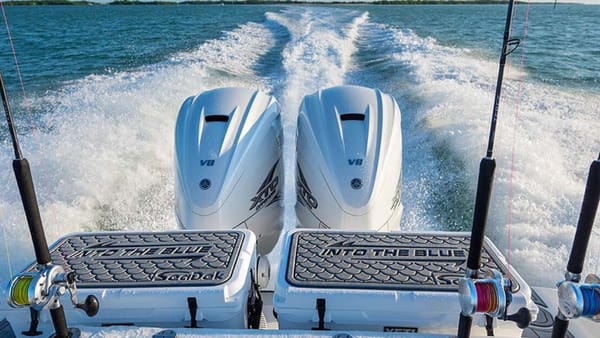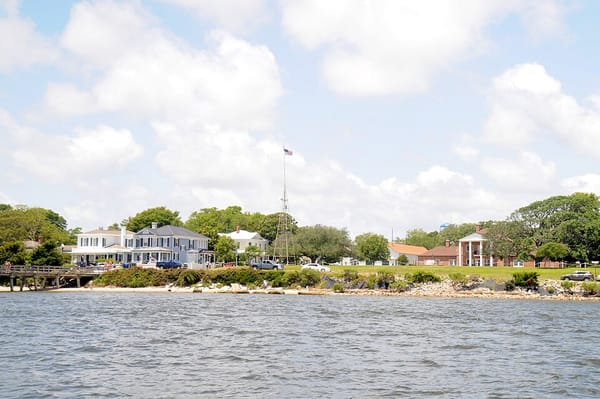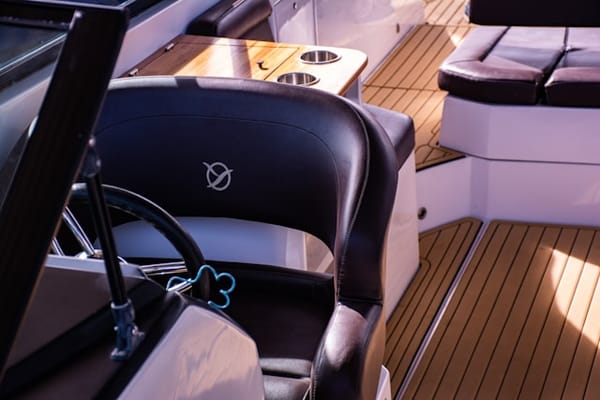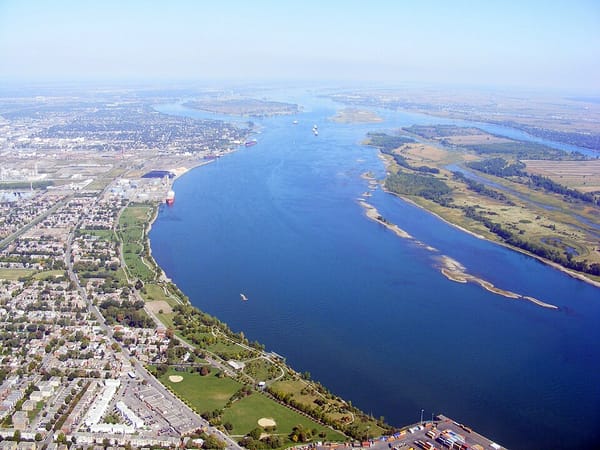Sizing Your Boat: All About Length, Draft, Beam and Clearance
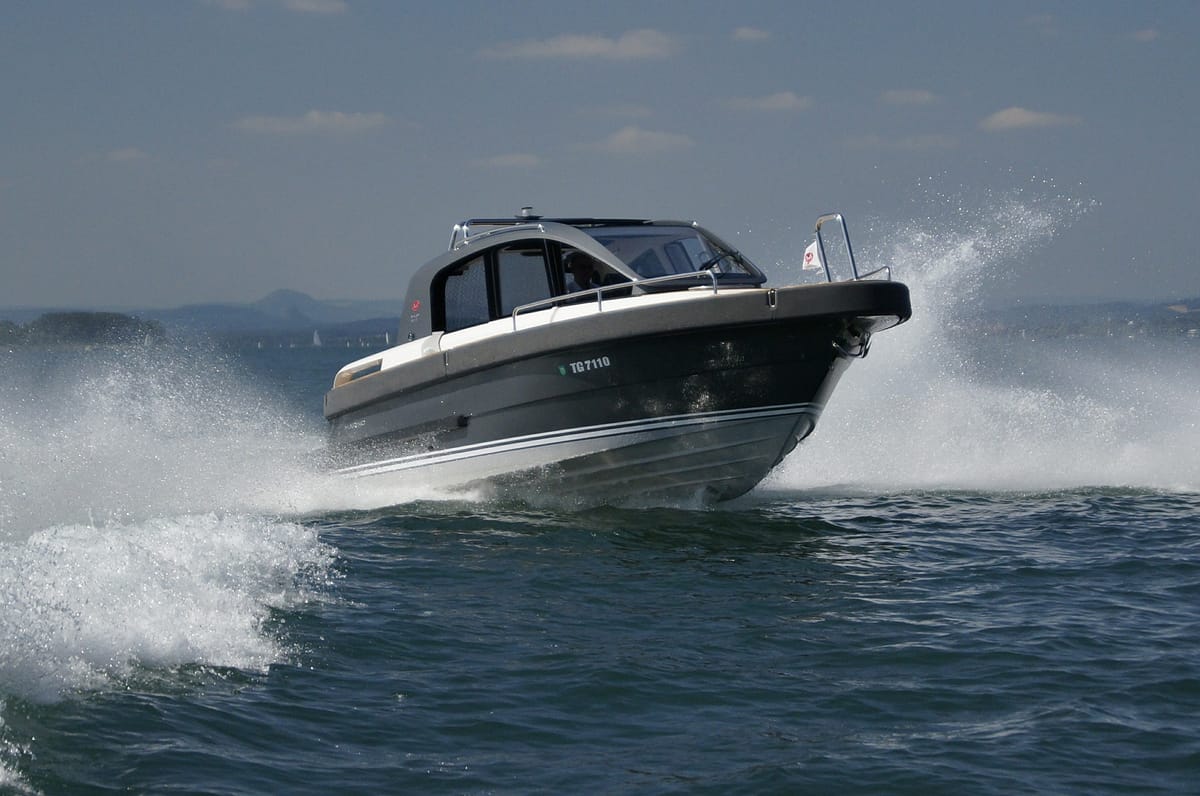
Do you know your numbers when it comes to sizing up your boat? Accurate measurements for figures like length, draft, beam and clearance will keep your boat free from damage in marinas and private boat dock slips as well as while traveling beneath fixed bridges.
Length
Boat length is measured from the bow to the stern. However, the number is not as set in stone as it may seem. It can vary depending on whether there’s a swim platform, a bow pulpit, a dinghy on a davit or other things that contribute to the length overall (LOA).
Knowing the correct length of your boat is just as important as knowing how to properly operate it. We’re not talking about that number the manufacturer says it is … the one that’s part of the model name. For example, a Hatteras GT45X is 45 feet long, but with a swim platform and a bow pulpit, it could technically come closer to a total of 47.5 feet. This number can change from boat to boat (even among the same model and manufacturer) as well as type of boat.
Correct length is especially useful when docking or choosing a private boat dock rental. Trying to fit a boat into a slip that’s too small can result in damage to the boat, the dock and other property around it.
Example Average Length
- Cruising Sailboat: 16’ – 50’
- Catamaran: 32’ – 47’
- Cabin Cruiser: 25’ – 45’
- Motor Yacht: 29’- 65’
- Center Console: 18’ – 32’
Draft
Another important factor is draft. A boat’s draft refers to the vertical distance from the waterline (where the hull touches the water) to the bottom of the hull, or keel on a sailboat. It determines the minimum depth of water a boat can safely navigate without running ashore (which, by the way, is very bad). Put simply, it helps you know how deep the water needs to be. Like length, it can vary from boat to boat. A sailboat can have a very large draft based on whether it has a keel (and whether the keel is removable).
Each dock has its own specific draft allowance, which is based on things like water level, tides and how flat or angled the ground is under the water. One dock can be vastly different than others in the area.
Dock draft measurements can be taken by dropping a long length of rope (weighted) or chain into the water, marking it at the water level and then measuring from the bottom up out of the water. Private docks on our site are listed at the low tide water level. This way, you know the absolute minimum depth of water. It’s always best to be conservative by one or two feet if you’re not completely sure you’ll be able to dock at that boat slip – due to things like changing tides, weather and boat wakes.
Boat Size vs Draft
- Low Draft: A boat 32 feet long and under needs 3 feet or less of water
- Medium Draft: A boat 45 to 65 feet long needs 4 to 5 feet of water
- High Draft: A boat 65 feet long or greater needs 5 to 7.5 feet of water
To throw a wrench into these statistics, there are instances where this might vary. Sailboats can be an exception as they may have a non-retractable keel, which gives them the need for a larger draft (since the keep gives them a bigger draft measurement). On the other hand, since catamarans are wide and displace water very efficiently, they may only need 4.5 feet of draft even if it falls into a bigger category.
Average Boat Draft
- Cruising Sailboat: 5’ (but could be more if it has a non-retractable keel)
- Catamaran: 2’ – 4’(large cats could need more)
- Cabin Cruiser: 3’
- Motor Yacht: 4’ (the bigger the yacht, the bigger the draft)
- Center Console: 2’
As a general rule, the bigger the boat is, the deeper the draft will need to be. Factors like weight and beam play into this concept. The hull shape can also play a part. A flat or multi-hull boat (like pontoon boats, jet skis and dinghies) has a low draft. A deep V-shaped displacement hull (like most power boats and cruisers) allows the boat to sit deeper in the water, resulting in a high draft.
Beam
Beam refers to the distance from the widest point of the boat to the other side (think: middle of the boat from side to side). Catamarans are very wide compared to that of center consoles and cabin cruisers. Most boats fall into the 18 to 20-foot beam category, but cats can be as wide as 22 to 30 feet.
The beam of a boat will determine how wide of a boat slip rental you need. You’ll want to measure the dock to make sure it’s wide enough that your boat won’t bang against the sides.
Average Beam
- Cruising Sailboat: 12’
- Catamaran: 22’ to 30’
- Cabin Cruiser: 8.5’
- Motor Yacht: 13’
- Center Console: 9’
Clearance
Clearance, or vertical clearance, is important for sailboats and catamarans with a fixed mast, as well as sportfish boats with tall towers. It refers to the height of the boat from the waterline to the top of the mast or flybridge (or any non-removable part). Some masts can be lowered, so that would not be included in your clearance number.
Out in the wide-open ocean, clearance isn’t too much of an issue. The time it becomes an issue is when you’re sailing under a fixed bridge. A drawbridge is no problem. You just need the patience to wait till it opens. Sailboats can require anywhere from 35 to 75 feet of vertical clearance, so you’ll want to check out those fixed bridge heights when charting your course or choosing a boat dock for rent. Be sure to take into account low tide when determining clearance.
Average Boat Clearance
- Cruising Sailboat: 50’
- Catamaran: 39’
- Express Cabin Cruiser: 9’ 10 “ with tower up / 7’ 7” with tower down
- Motor Yacht: 14’ to 15’
- Center Console: 9’ 6”
Whether you’re docking your boat at a marina, a mooring or a private boat dock rental, the correct measurements play a big factor. Hopefully this has given you some good advice to make the whole docking process a bit easier. Now if you could just control the wind while docking.
